A Step-by-Step Guide to Boost Search Engine Rank Position ASAP
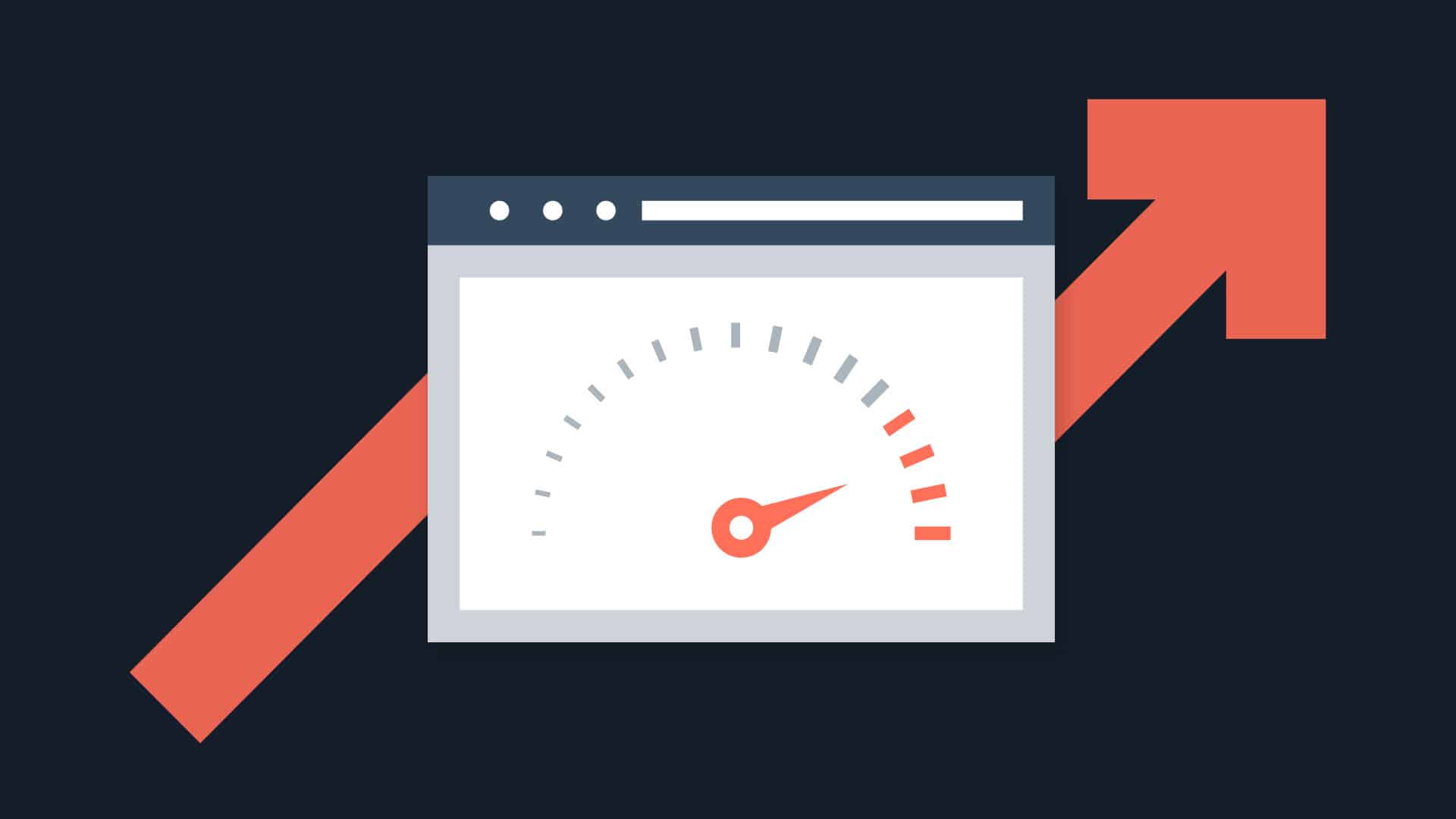
So you’ve done keyword research and found a target keyword that has a good balance of search volume and not too high of a keyword difficulty score. Time to start producing that content and your search engine rank position will increase, right?
Hold your horses.
Effectively assessing your opponents’ strengths and weaknesses is vital for positioning your content to gain keyword rankings that bring in traffic. Also known as a SERP Analysis, search engine rank analysis helps you discover what’s resonating with your audience and what aspects may need an upgrade.

Understanding the way keywords work in Google’s current first page rankings is critical. It helps you increase your speed to ranking and ensures your blog is a high-quality beacon of industry-leading information. Doing a good search engine rank position analysis is like the bridge that spans the gap between strong keyword research and a great content piece. With all of these pieces together, you’ll have content that ranks and brings in traffic faster.
When should you inject a healthy dose of SERPA into your keyword research and content production process?
For the rest of your life.
But seriously, once you start including this step into your content creation process, the value becomes immediately apparent. When done correctly, this single step takes you from being a hip-shooting content marketer and turns you into a sharpshooting sniper taking out top 10 rankings.
We’re going to ask ourselves a lot of questions and provide insightful answers to help you create better content, create it more efficiently, and create it with a higher chance of outranking existing pages already on the first page of results.
We’ll do this while simultaneously interweaving layers of analogies and metaphors that will turn this article into a living, breathing document.
Step 1: What is the User’s Search Intent?

The first step of your search engine rank position analysis will be thinking about what the user’s search intent might be. Our goal is to figure out whether this search is informational, transactional, or navigational. What does the user want to do?
Informational searches tend to consist of people looking for general information. For most of our blog topics, we’ll want to make sure we’re writing for informational search queries that we can add valuable answers to and give better answers than the currently ranking top 10 results.
We want to build credibility for being the source where visitors come to for relevant trends and topics… every time.
Navigational and transactional search queries tend to be done by people looking to take action or get somewhere specific. Navigational search queries are people looking to visit a particular site or a specific page within a site. Transactional search queries are people looking to take a make moves on a site like making a purchase or contacting a sales rep.
Paradoxically, a search for directions to a restaurant is not a navigational search but would actually be a transactional search because they’re on their way to take action.
It’s important to ask yourself, “Does my content meet what my audience is searching for?” If not, it’s time to make some adjustments.
Google’s Local 3-Pack
If you do almost any search and add “near me” to it, you’ll likely see Google’s Local 3-Pack appear. This search feature shows Google map results, aggregate review ratings, and business contact info. This is good to know when you’re trying to align keywords to a local service or product.

Google’s Knowledge Panel
There are two types of knowledge panels to be aware of: local and branded/personal. Seeing one of these panels in the right-hand column of search results is your signal that the keyword phrase is an informational search.

Try typing in “Top Celine Dion Songs” to see a big audacious knowledge panel in all its glory.
Google’s Answer Box

The answer box usually appears when someone is searching for quick or direct answers to specific questions, e.g., “convert 189 lbs to kg”, or “capital of Idaho.” If I see an answer box on a search query I want to create content for, then I’m going to think long and hard about whether I can do better than Google’s direct answer on the SERP.
Since we can’t necessarily “rank” for the answer box, we might capture some of the traffic below where users don’t quite get their question answered in the box.
Google Search Ads
Are you writing a piece of content to rank organically without looking at whether or not Google shows ads for the target keyword? Let’s take a step back and revise our strategy.
Content that helps people purchase (transactional searches) can be very different than content that helps people learn (they don’t always have to be mutually exclusive though), and your content should be tailored for these different search intents.
If we search “how to save Orca whales,” you might see one ad at the top of the SERP which tells us that people trying to save Orca whales might be inclined to donate money or buy a save the whales t-shirt to help their cause. The organic results consist of either general information about the whales or guides on how to save the whales.
Now if we search “Orca whale t-shirts”, we’ll see a shopping ads carousel at the top with one text ad below it, and three ads at the bottom of the SERP. Also, all of the organic results show product pages where we can buy t-shirts and can this way deduce that people searching for “Orca whale t-shirts” have a high commercial intent.
Step 2: What Does the Data Mean?
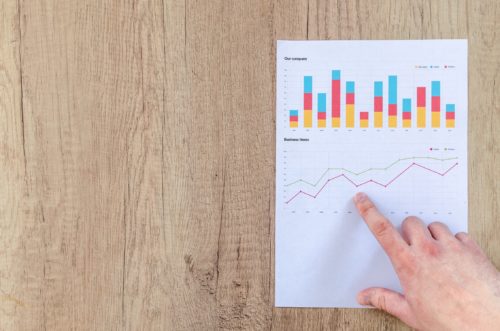
This is the most time-consuming step in the search engine position analysis because we’re going to roll up our sleeves and read the content on those top 10 ranking pages. Automation and tools are great, but they’re still no match for a mind honed in the search engine rank position analysis.
Additionally, we’re going to take it a step further by creating a spreadsheet that lets us take a glance at the on-page factors that influence rankings so we have a clear idea of how to position our piece.
SERP tools discussed below will help save you time by efficiently compiling and presenting data. However, they don’t actually inject information into your brain the same way that taking the time to read and inspect your competition’s pages does.
These are the main factors we’ll include in our spread, and walk through an example of grabbing this data further down.
- Page speed
- Metadata (text and length of title and description)
- H1
- Word count
- Backlinks and referring domains
- Alt text
- Authority
Domain and page authority is crucial to look at before putting pen to paper. There are two fundamental ways to look at authority – use pro SEO tools, or use the eye+brain method.
If you have pro tools to use, like Moz’s Link Explorer, you’ll get a precise understanding of how strong the ranking domains are. Also, you’ll be able to easily see ahead of time when a domain authority is higher by 40 points and difficult to compete against for ranking purposes.
This doesn’t always mean you shouldn’t compete, because who doesn’t love a good David and Goliath story? At least you’ll be able to make an informed decision before going after your target keyword. In other words, you can sharpen your rock before slinging it into the giant of the interwebs (I knew you’d insist that I maintain consistency with that last analogy).
If you don’t have access to something like Moz or SEMrush, then you should still think about how the strength of the incumbent pages will potentially affect the speed at which you’re able to rank on the first page for your chosen target keyword.
The Eye-Brain Analysis Method
Never heard of the eye-brain method?
If you don’t have access to paid SEO tools, you can look at the domains with your eyes (or ears if vision impaired), and estimate how good the ranking sites are. Generally speaking, if you recognize the domain, it probably has authority (e.g., Wikipedia, Yelp, G2Crowd, etc…). Essentially, this is something I just made up right now to say you should still try to get a sense of authority whether or not you have pro SEO tools.
SEO Optimization Tools
Here are a few standout tools to aid you in your quest to conquer the search engine rank position analysis process:
SEMrush SEO Content Template Tool
If I were only going to choose one paid tool to help me with SERP analysis, it would be SEMrush’s SEO Content Template tool. This tool lets you drop in your target keyword phrase and spits back a report of the top 10 web pages ranking in Google. It also gives you a hint at the backlinks coming into the ranking pages with a list of domains they recommend trying to acquire backlinks from.
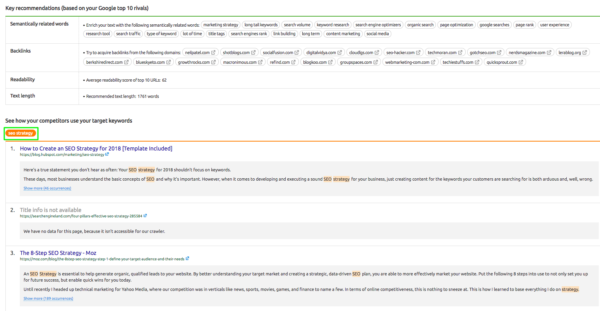
SEO Meta in 1 Click Google Chrome Extension
If I were to recommend one free tool for this step, it would be the SEO Meta In 1 Click Google Chrome Extension. This guy gives us a snapshot of the meta titles, meta descriptions, and headers of existing pages, making it really simple to copy and paste into your data spreadsheet and find ways to increase your SEO ranking.
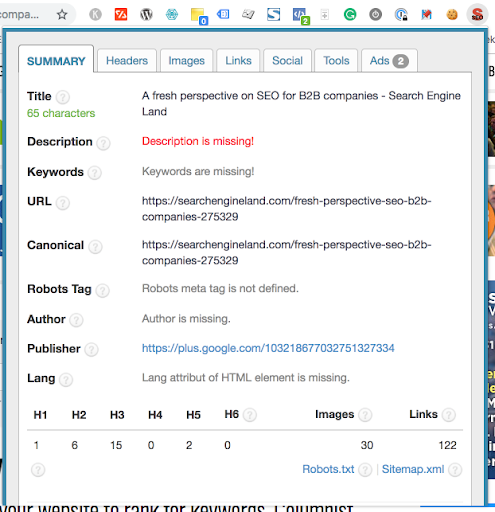
MozBar
The handy dandy MozBar puts SERP analysis relevant data right into your visuals with the Google search engine results page. Once enabled and logged into Moz, you can view domain authority, page authority, number of links and referring domains, with shortcuts linking to more detailed data regarding the link profiles of the individual pages.
Ahrefs Keyword Explorer
This is a beneficial tool you can use to look at all of the backlinks going to the top 10 pages, and develop a strategy within your overall approach to acquire links from those same or similar sources.
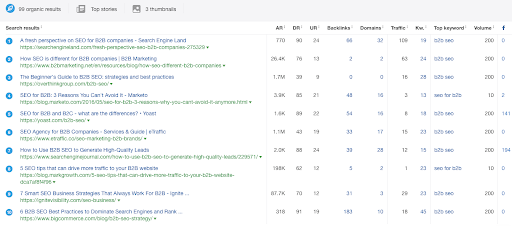
It’s also huge to see if links are coming from sites that are difficult to get backlinks from and if they already have a million links pointing it to the pages on the SERP. We need to know this to determine whether or not we’re going to forge ahead with our chosen keyword phrase or find something longer tail and less difficult.
Google PageSpeed Insights
Did you know that the Peregrine Falcon is the fastest bird in the world and can reach speeds up to 240 mph! Isn’t it always fun to know or talk about how fast something goes? Well, now you can experience the same thrill when analyzing web pages!
You’ve probably seen at least one source admonishing us to heed the importance that page speed plays in ranking factors. I won’t belabor the point here, but check out this one to start – SEO Best Practices from Moz – so you don’t just have to take my word for it.
What’s Your Content Marketing Strategy?
Now that we know technical details about the top 10 ranking pages let’s take a quick look at what lives on the page of those top rankers.
The first question is, what’s actually on the pages? Is it an exact match domain with very little content? Is the content optimized to increase SEO ranking? Is it so perfectly optimized that every 101 college course includes in their essential reading lists?
A robust content piece will be up-to-date, have high-quality media when appropriate, firm answers that address the topic specifically and thoroughly and are interesting to read. It might also have something unique to offer, like an industry trends report, comparison, or chart.
If the content in the top 10 is missing any of those elements, we have an opportunity to take advantage of the content gaps left wide-open for the taking and increase SEO ranking. When we capitalize on that and pull ahead from the competition faster than a Peregrine Falcon in full flight, we can be proud of our efforts.

Step 3: What is Our Next Move?
Now, it’s time to take the results from identified SERP features by the reins and combine that with the data of the top ranking pages. These results will help us answer the questions of “when people search my keywords, what are they looking for?”
Let’s sync our minds to be one with the search, and run through a thought process together by answering the following questions, which will ultimately help us determine our strategy. See a quick case study below:
2 Minute Case Study on Keyword “SEO for b2b”
Q: Why are people searching this?
A: The SERP shows a combination of ads and informational articles. There are four ads at the top and three ads at the bottom for max commercial intent! A few different situations immediately come to mind where people are Googling this. One possibility could be they’re strictly looking for training or information to help themselves improve or start SEO for their business, which sells to other companies. But the ads suggest there is likely to be commercial intent for people who are looking for services to help them with their SEO.
Ok, good to know let’s move on to the next step.
Q: What’s already ranking?
A: I’m looking from my laptop, so mobile results may differ, but right away I see Search Engine Land has the #1 spot after the bevy of text ad service (composed by our fearless leader, Garrett Mehrguth no less!) Oooh, they have a DA of 90 and are well respected in the industry as an authority – double authority cred!
As I scroll down the results I see a post from Yoast – but not with the most, (relevant title that is). I didn’t ask about how B2B is different from B2C, and frankly, I’m not sure how much value it adds to me if I’m just looking to hire or do B2B SEO.
Q: Is the content thorough, high-quality, and optimized?
A: Let’s use our “SEO Meta in 1 Click” tool and look at position #2 briefly.
The target keyword phrase is in the metadata, although not used directly.
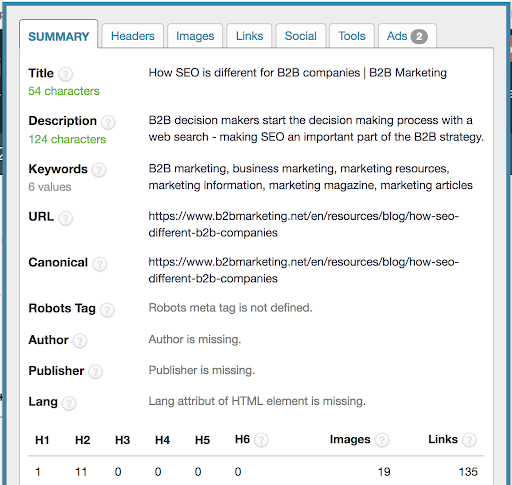
The H1 of “How SEO is different for B2B companies” is also not directly targeting the keywords we’re interested in. And there isn’t much optimization of their alt text, but you’ll have to just take our word for it.
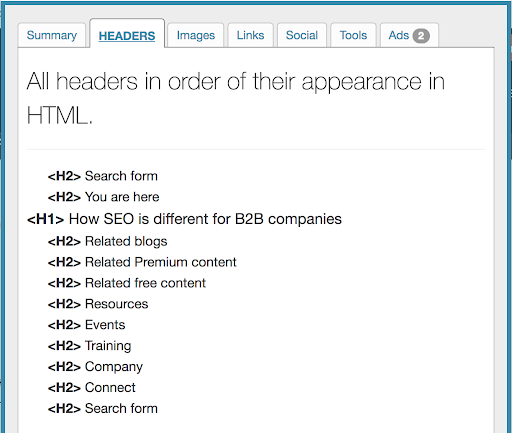
You might say to yourself, “Well, maybe they’re targeting a different keyword.” Precisely! And if we count the words in the article (roughly 828), it looks like this piece isn’t quite hitting the 1890 words it takes to rank on the first page these days.
But what about the page speed?
It looks like their page speed has room for improvement too. Google doesn’t give them a Speed Score, but there are plenty of optimizations yet to do with the current optimization score.
Because this is a B2B keyword, I would expect more people to be searching on their computer while at work in the mindset of B2B life as opposed to searching on mobile outside of the office. So I might give more weight to the desktop speed.
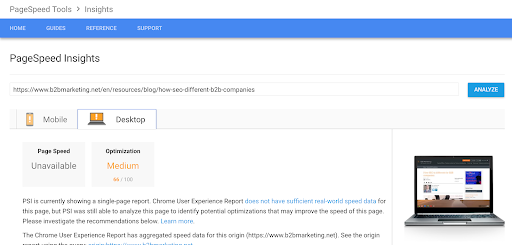
These few factors tell us that their content for “SEO for b2b” targeting has some SEO weaknesses in it. And we identified those on the #2 ranking within a few minutes using 100% free tool!
From here, we could dive into looking at their authority and backlink profile (and we should).
Step 4: Are We Ready to Increase Search Engine Rank Position?

Now that we’ve done our due diligence by analyzing the intent of the target keyword phrase, inspected the strength of the incumbent pages based on search engine factors, and content quality, it is indeed time to start producing content.
This analysis should be used like NOS to super-boost your effectiveness for ranking and bringing in traffic for each piece you create. Or better yet, it can super-boost your sharpened and deadly rock as you sling it into the giant of the interwebs. It’s never going to happen if it’s treated as a one and done – it can only do that if quality content is consistently being published and success is being built upon success and overcoming the failure that success requires.
Final SERP Analysis Takeaway
Here are some convincing stats to help you see the urgency and importance of getting your content right, and then getting it live. (Source: https://www.hubspot.com/marketing-statistics):
- B2B companies that blogged 11+ times per month had almost 3 times more traffic than those blogging 0-1 times per month.
- Companies that published 16+ blog posts per month got almost 3.5 times more traffic than companies that published 0 to 4 monthly posts.
- 43% of B2B marketers say blogging is their most important type of content.
- Content marketing gets 3 times more leads than paid search advertising.
We see these stats reflected in the results of our clients who maintain that type of output. Just imagine quick publication combined with a laser-like focus to penetrate search results, and purpose-built content to pick apart the competition’s weaknesses.
Just like an untrained warrior who punches the air really fast and without forceful strength, so might some create content without a clear competitive direction. Having the ability to size up the competition and strike based upon actionable intelligence is what makes the work of the search engine rank position strategy pay off on the battlefield.
And now that your mind has been properly prepared, it’s time to get out there and increase your search engine rank position with a fight.
Author Bio: Jason Rankin – Account Manager
Not much of runner himself (he prefers surfing), Jason Rankin was born to run campaigns and make people laugh. He never gets sick of seeing new lead notifications pop in his inbox for his clients or working strategically with his teams to be on point. Overall, he strives to push his teams to be the best they can be.
Since joining Directive in 2018, he’s become the only member of the tri-department department – which is famous for being a member of the SEO, PPC, and account management teams…all at the same time.
Before Directive, Jason earned his B.A. in business from Vanguard University and M.S. in Management and Organizations, with honors, from the University of Colorado at Denver. When not at the office, Jason enjoys hanging with his four little rockstars (kids not bandmates). He also enjoys kicking the dust off his boots at country music concerts or surfing con los primos down in Mexico.




